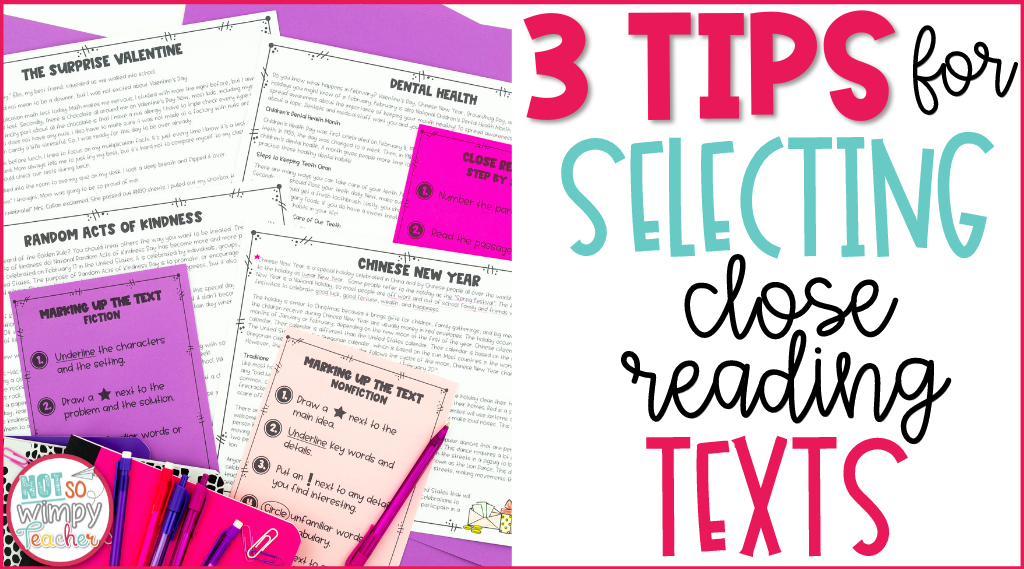
Close reading is an important component of literacy education. It’s essential not only for meeting state standards but also for deepening students’ comprehension skills. However, engaging young learners in this repetitive and meticulous process can be a challenge. Today, I’m sharing 3 tips for selecting the perfect texts for close reading that will help transform the process from a tedious task to a fun learning experience.
What is close reading?
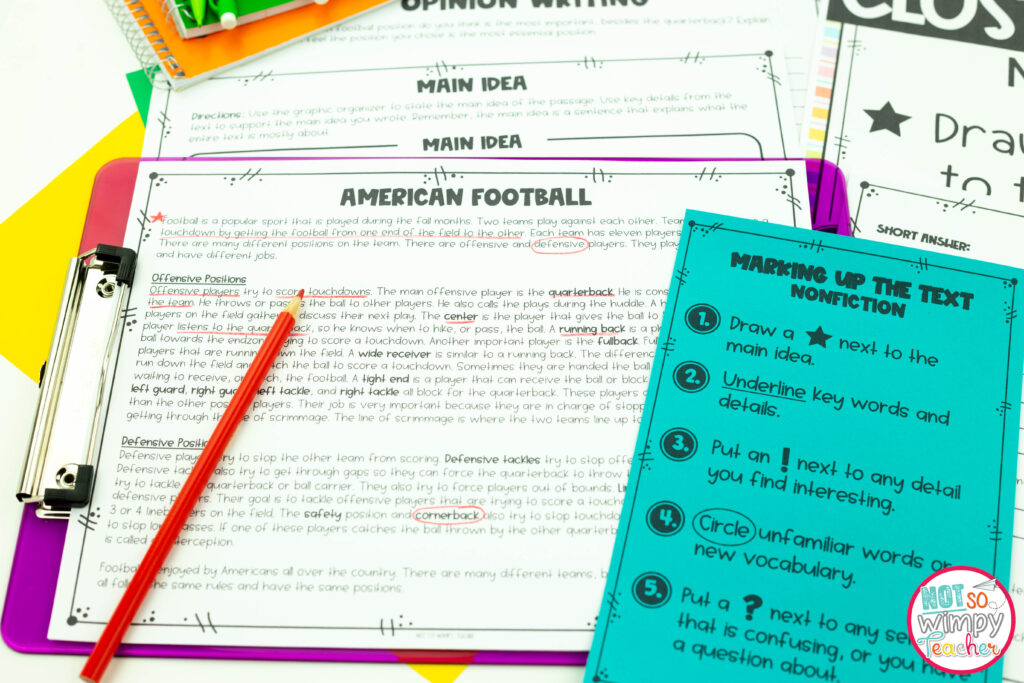
Close reading is a special reading skill that encourages students to thoroughly dissect and understand a text. It involves scrutinizing words, phrases, and larger text structures to find deeper meaning.
Close reading is a rigorous process. It requires multiple rereads, close attention to detail, and digging below the surface. But when done correctly, close reading significantly enhances reading comprehension and analytical skills. It also helps students perform better on standardized tests.
Selecting the perfect close reading texts
The success of close reading hinges on the texts chosen for study. The right choices can spark students’ interests, cater to diverse learning styles, and significantly enhance comprehension. Carefully selected texts ensure students remain engaged through repeated reads, understand challenging concepts, and develop a deeper love for reading.
So how do you find these magical texts? By following these 3 simple tips for selecting the perfect text for your students.

Tips for selecting the perfect texts to engage readers
1. Align texts with students’ interests
To capture students’ attention, choose topics that are interesting to them. From animals to technology, the perfect texts for close reading involve themes that spark curiosity and excitement. Gather student input to make your choices even more relevant. Use what you know about your students to select texts they will find interesting.
2. Ensure close reading texts are appropriately complex
You are looking for the sweet spot here. Too easy, and there won’t be enough meaning to dig into. Too hard and students will be turned off. Try to choose texts that challenge students but do not overwhelm them. You want to stretch their abilities while also maintaining readability. This approach fosters growth without causing frustration.
3. Include a variety of genres
Students need to be able to apply the close reading process to a variety of genres. So when selecting the perfect texts for close reading, be sure to Incorporate fiction, nonfiction, and poetry to provide a comprehensive learning experience. Different genres expose students to various perspectives and engage different aspects of comprehension and analysis. Don’t rely on just one type of text.
The Perfect Close Reading Passages
If all that sounds like a big task, fear not. We’ve put together a full year of carefully curated close reading comprehension passages for you.
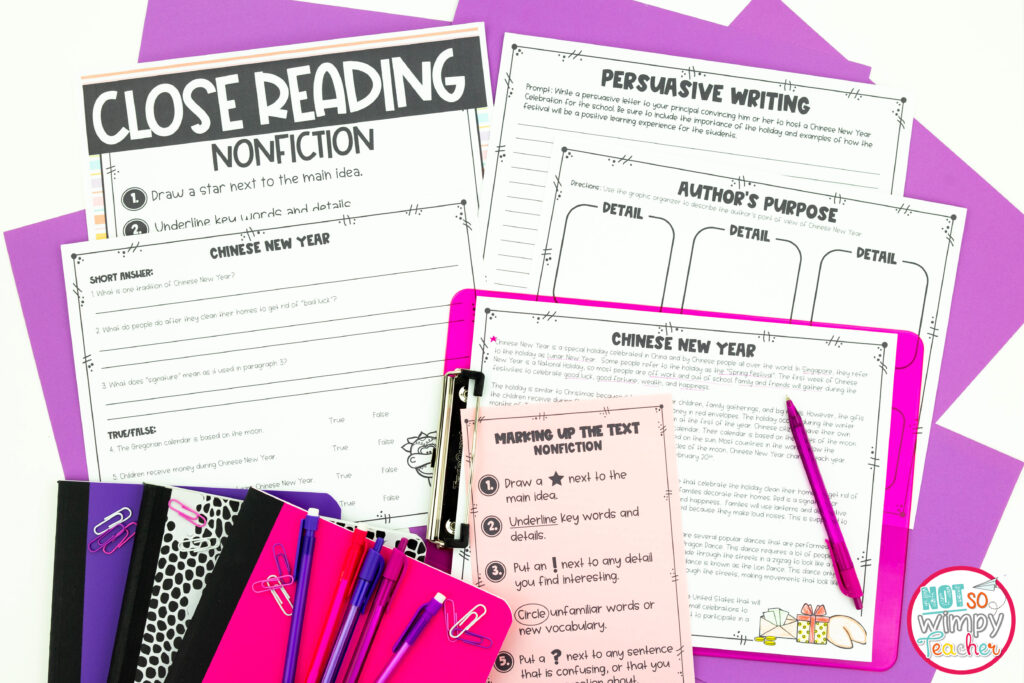
This bundle includes 60 ready-to-use, student-friendly reading passages, blending fiction, nonfiction, and even poetry. Each month has five unique reading passages that combine seasonal themes with evergreen content.
Each passage is accompanied by comprehension questions that encourage deep thinking and text evidence analysis. We also include standards-based reading activities and writing responses for each passage, ensuring a thorough engagement with the text.
We’ve also included everything you need to make implementation easy. 12 teacher anchor charts and printable student versions, along with an “At a Glance” calendar for easy lesson planning mean these passages are truly ready to print and teach.
These resources are designed to make close reading effective and enjoyable for both you and your students.
Don’t believe me? Look what Lisa K. had to say:
Our reading passages bundle offers a variety of interesting, seasonally-based passages that students love to create a highly engaging and educational experience.
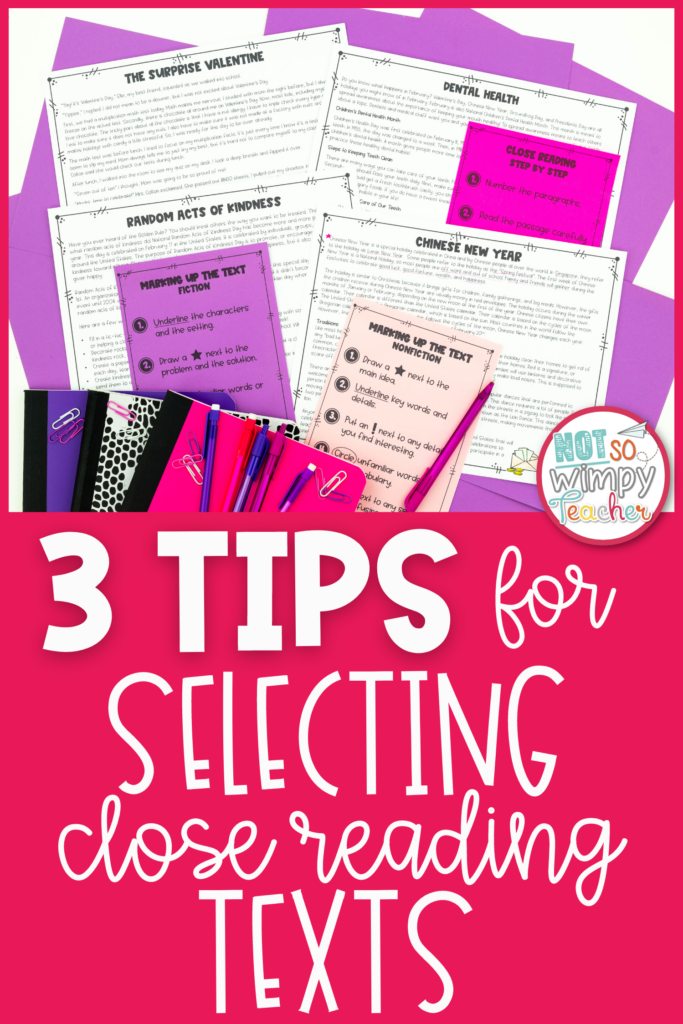
Have a Not So Wimpy Day,


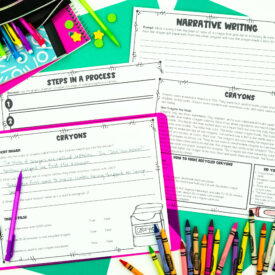
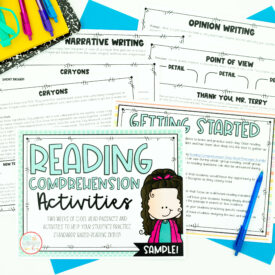
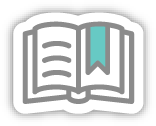


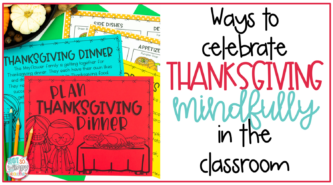
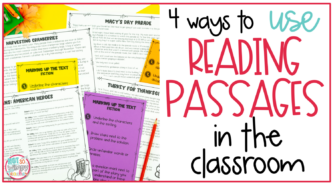
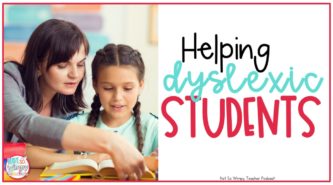











 End of Year Carnival Week for grades 2-5!
End of Year Carnival Week for grades 2-5!
Jamie,
I love all the content you share! I implement your Third Grade Grammar Interactive Notebook Program in my classroom every day, and it is one of my students’ favorite parts of class. Thank you for the tips you shared regarding finding appropriate texts to teach close reading. I love how the first tip you shared was related to engaging student interest. It breaks my heart how many of my students have a distaste for reading by the time they reach third grade with me, and I believe engaging children in readings they are interested in so they will enjoy reading is paramount! I can’t wait to check out the resources you shared with this post.
Thank you!
Mollie
By prioritizing student interest, complexity, and genre variety, educators can transform close reading into an enjoyable and effective learning experience.
Your words of encouragement and support have meant everything to me, and I want you to know how much they matter to me especially as I keep working hard in my journey toward accomplishing my professional goals. I would want you to realize the value of your comments.
This is so helpful! The information is clear, concise, and exactly what I was searching for. Thank you for making it easy to understand!
Great tips! Finding the right close reading texts can be a challenge, but your breakdown makes it so much easier. I especially love the focus on engagement, keeping students interested is key to building strong reading skills. Thanks for sharing these helpful insights!